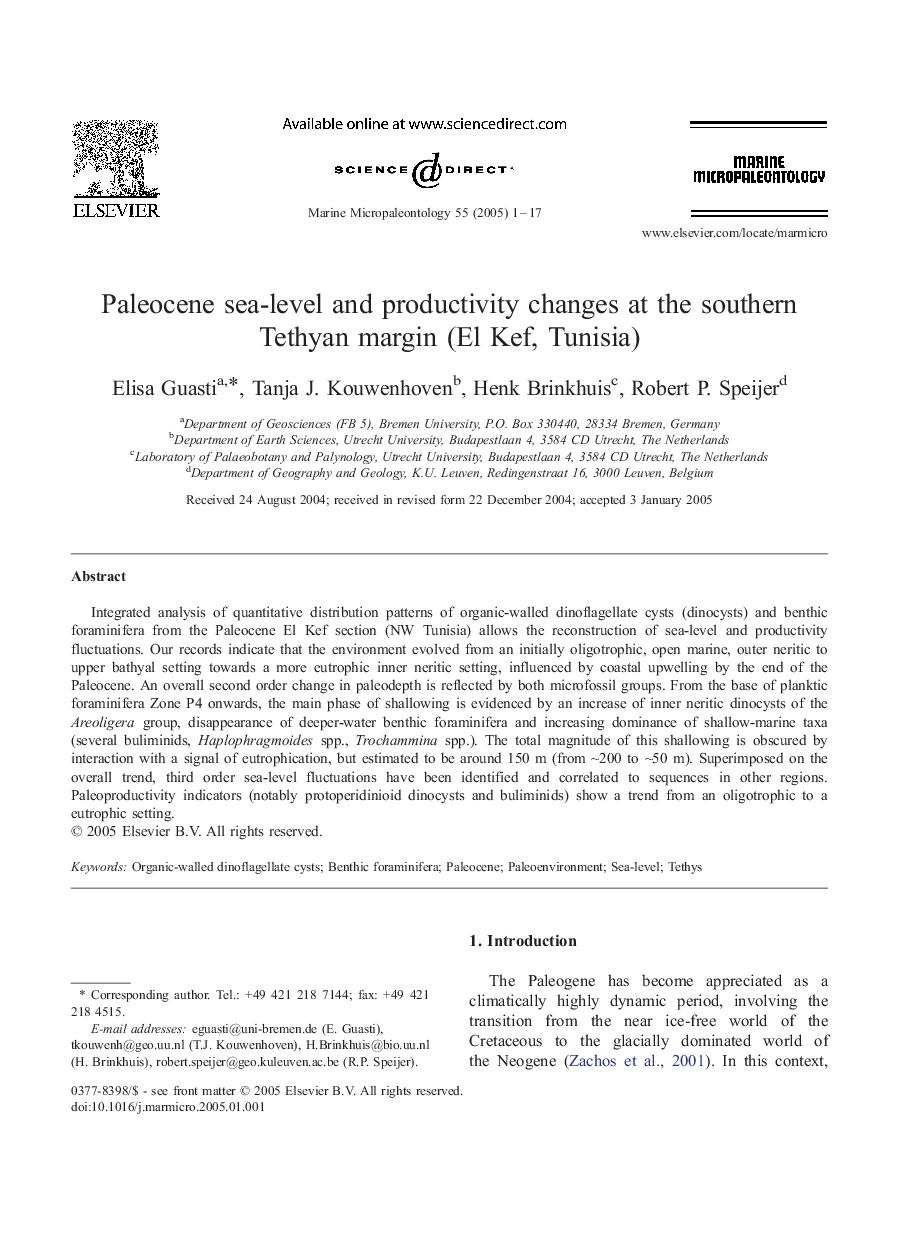| Article ID | Journal | Published Year | Pages | File Type |
|---|---|---|---|---|
| 9539573 | Marine Micropaleontology | 2005 | 17 Pages |
Abstract
Integrated analysis of quantitative distribution patterns of organic-walled dinoflagellate cysts (dinocysts) and benthic foraminifera from the Paleocene El Kef section (NW Tunisia) allows the reconstruction of sea-level and productivity fluctuations. Our records indicate that the environment evolved from an initially oligotrophic, open marine, outer neritic to upper bathyal setting towards a more eutrophic inner neritic setting, influenced by coastal upwelling by the end of the Paleocene. An overall second order change in paleodepth is reflected by both microfossil groups. From the base of planktic foraminifera Zone P4 onwards, the main phase of shallowing is evidenced by an increase of inner neritic dinocysts of the Areoligera group, disappearance of deeper-water benthic foraminifera and increasing dominance of shallow-marine taxa (several buliminids, Haplophragmoides spp., Trochammina spp.). The total magnitude of this shallowing is obscured by interaction with a signal of eutrophication, but estimated to be around 150 m (from â¼200 to â¼50 m). Superimposed on the overall trend, third order sea-level fluctuations have been identified and correlated to sequences in other regions. Paleoproductivity indicators (notably protoperidinioid dinocysts and buliminids) show a trend from an oligotrophic to a eutrophic setting.
Keywords
Related Topics
Physical Sciences and Engineering
Earth and Planetary Sciences
Palaeontology
Authors
Elisa Guasti, Tanja J. Kouwenhoven, Henk Brinkhuis, Robert P. Speijer,
